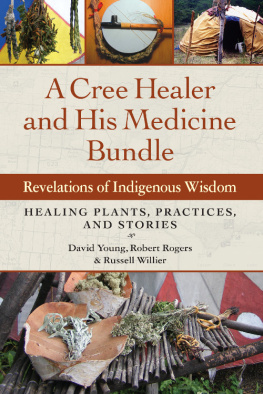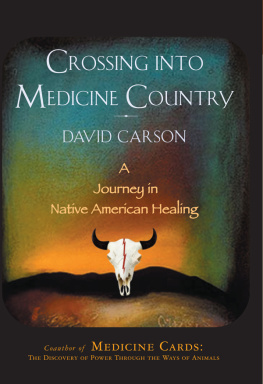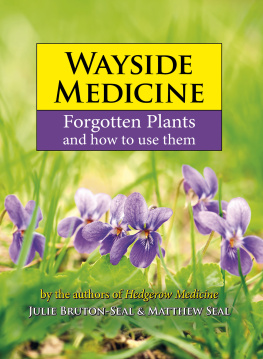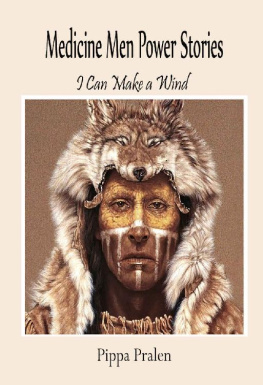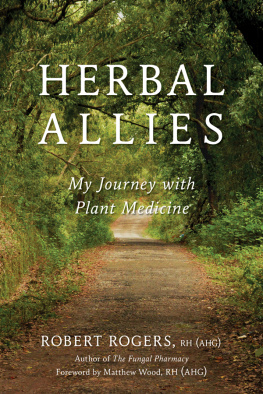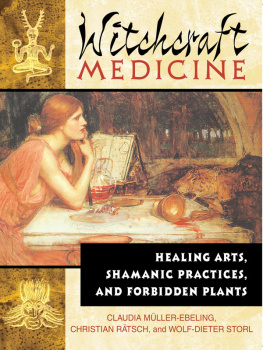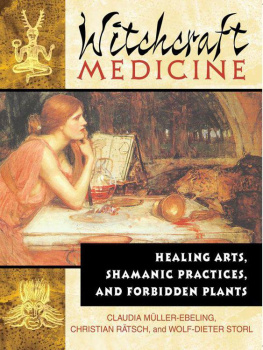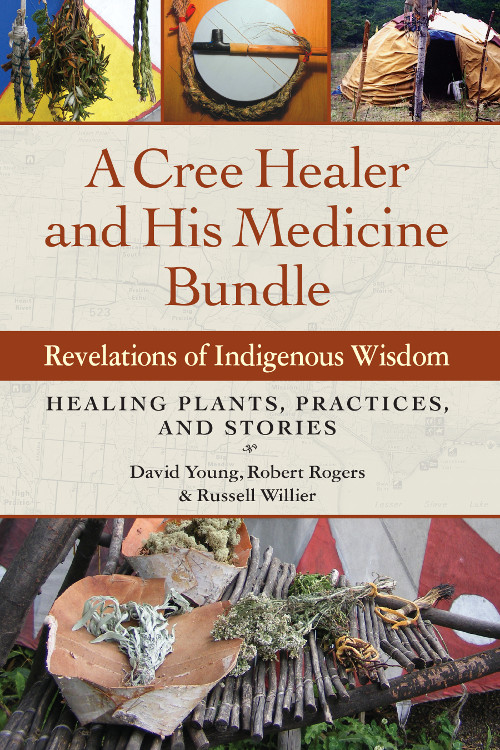A Cree Healer and His Medicine Bundle
Revelations of Indigenous Wisdom
HEALING PLANTS, PRACTICES, AND STORIES
David Young, Robert Rogers, and Russell Willier

North Atlantic Books
Berkeley, California
Copyright 2015 by David Young, Robert Rogers, and Russell Willier. All rights reserved. No portion of this book, except for brief review, may be reproduced, stored in a retrieval system, or transmitted in any form or by any meanselectronic, mechanical, photocopying, recording, or otherwisewithout the written permission of the publisher. For information, contact North Atlantic Books.
Published by | Cover photos by David Young and Robert Rogers |
North Atlantic Books | Cover design by Brad Greene |
P.O. Box 12327 |
Berkeley, California 94712 |
About the cover photos: The pipe, Sweet Grass, and sweat lodge are Lakota, and the shamans drum is Dogrib Dene from the Northwest Territories. Depicted at the bottom, from top left are Prairie Sage, Labrador Tea, and Sweet Grass; at the very bottom are White Sage (Artemisia ludoviciana), Reindeer Moss, and Yarrow.
Disclaimer: This book is not in any way intended to replace the services of a licensed health-care provider in the diagnosis or treatment of illness or disease. Any application of the material in the following pages is at the readers discretion.
Maps used by permission of Backroad Mapbooks
A Cree Healer and His Medicine Bundle: Revelations of Indigenous WisdomHealing Plants, Practices, and Stories is sponsored and published by the Society for the Study of Native Arts and Sciences (dba North Atlantic Books), an educational nonprofit based in Berkeley, California, that collaborates with partners to develop cross-cultural perspectives, nurture holistic views of art, science, the humanities, and healing, and seed personal and global transformation by publishing work on the relationship of body, spirit, and nature.
North Atlantic Books publications are available through most bookstores. For further information, visit our website at www.northatlanticbooks.com or call 800-733-3000.
Library of Congress Cataloging-in-Publication Data
Young, David E. (David Earl)
A Cree healer and his medicine bundle : revelations of indigenous wisdom / David Young, Robert Rogers, Russell Willier.
pages cm
ISBN 978-1-58394-903-0 (paperback) ISBN 978-1-58394-904-7 (ebook)
1. Willier, Russell. 2. Willier, RussellPhilosophy. 3. Cree IndiansBiography. 4. ShamansAlbertaBiography. 5. Medicinal plantsAlberta. 6. Cree IndiansMedicine. 7. Traditional medicineAlberta. I. Rogers, Robert Dale, 1950 II. Willier, Russell. III. Title.
E99.C88Y68 2015
971.200497323092dc23
[B]
2014024236
This book is dedicated to the numerous Native healers who have suffered so much discrimination in the past and who continue to dedicate their lives to helping aboriginal peoples and to preserving traditional medicinal knowledge.
We would like to thank the Canadian Circumpolar Institute and the Centre for the Cross-Cultural Study of Health and Healing (now the Centre for Health and Culture) at the University of Alberta for funding the fieldwork upon which this book is founded. We would also like to thank Clifford Cardinal for providing the correct orthography for the Cree terms Russell Willier uses for his medicinal plants, as well as Mussio Ventures Ltd. for allowing us to use maps from their Backroad Mapbook of northern Alberta. We are grateful to Nancy Turner for providing corrections.
Contents
David Young
I first encountered aboriginal religion and medicine in 1984 when I participated in a multidisciplinary project to document the traditional skin-tanning methods of Russell and Yvonne Willier on the Sucker Creek Reserve in northern Alberta. In the course of getting to know the Williers, I was surprised to learn that Russell Willier is a Cree healer. As a result of our growing friendship, Russell developed a degree of trust that allowed him to talk about his beliefs and practices in a way that he was not accustomed to doing with outsiders. This trust was further enhanced when I described my own background in Zen Buddhism, which seemed to Russell to be quite compatible with many of his own beliefs and practices.
At the conclusion of the skin-tanning project, a new project (Project for the Study of Traditional Healing Practices) was set up as a multidisciplinary effort involving anthropologists at the University of Alberta, graduate students in the Department of Anthropology at the University of Alberta, Dr. Janice Morse from the Faculty of Nursing at the University of Alberta, individuals from the Provincial Museum of Alberta (now the Royal Alberta Museum), the Boyle McCauley Clinic in Edmonton, and Dr. Steven Aung. The project was made possible by a research grant from the University of Alberta. Research associated with the Project for the Study of Traditional Healing Practices, which spanned a five-year period, consisted of conducting fieldwork on the Sucker Creek Reserve in northern Alberta, helping Russell Willier collect wild plants for his medicines, participating in ceremonies, and documenting the progress of several non-Native patients who were treated by Russell for psoriasis. The results of this research are summarized in a book, Cry of the Eagle: Encounters with a Cree Healer (1989), and in a variety of journal articles.
In 1985, our interdisciplinary team documented Russell Willier treating ten non-Native patients with psoriasis, recruited through advertisements in a local paper. Psoriasis is an itchy, scaly skin disease that affects 2 to 6 percent of the worlds population. Although Russell Willier treats a variety of diseases, we selected psoriasis for treatment because it is highly visible and the effects of treatment can easily be monitored. The experiment consisted of two stages. In the first stage, patients were treated in the Boyle McCauley Clinic, a downtown Edmonton facility where doctors and nurses could observe the process. In the second stage, patients participated in sweat lodge ceremonies on an acreage near Edmonton. The healer came to Edmonton periodically over a period of several months. Treatment at the clinic consisted of purifying the room and other religious ceremonies, followed by having patients drink an herbal tea, after which a solution containing a number of ingredients was applied to the skin of the patients. Documentation included video footage, still photographs, and tracing the outline of major lesions on transparent material to provide a record of change in size of the lesions over time. Sweat lodge ceremonies involved constructing a sweat lodge on the first day of the ceremony. Patients arrived around three in the afternoon. Dressed in swimsuits or loose-fitting gowns, patients sat in a circle inside the sweat lodge, around a pit filled with red-hot rocks. After the entrance was closed, the healer prayed, chanted, and talked while sprinkling herbal water on the rocks to create a hot steam. The sweat consisted of four rounds, with each round lasting about half an hour. This part of the experiment consisted of three sweat lodge ceremonies for patients, followed by a fourth ceremony for spouses and children. Following the final sweat, a thanking ceremony was held to thank the spirits for assisting.

